Yesterday we featured the Big 2nd Gen Intel Xeon Scalable Refresh Brings Competition Anew. Intel had pre-briefed us on another processor launch, the Intel Atom P5900 series. Originally, Intel was set to launch these chips along with a suite of products for MWC 2020 in Barcelona, Spain where 5G infrastructure would be a hot topic. While the “refresh” was focused on re-pricing and positioning an existing architecture, the Intel Atom P5900 series is focused on introducing a new architecture with new capabilities to the market, specifically tuned for 5G carrier operations. We wanted to give each a full day to be featured on STH.
Intel Atom P5900 Overview
The new Intel Atom P5900 series is designed to bring a more focused 10nm SoC to the 5G wireless base station market. As part of that, Intel is bundling a new set of features along with new cores compared to the Atom C3000 series.
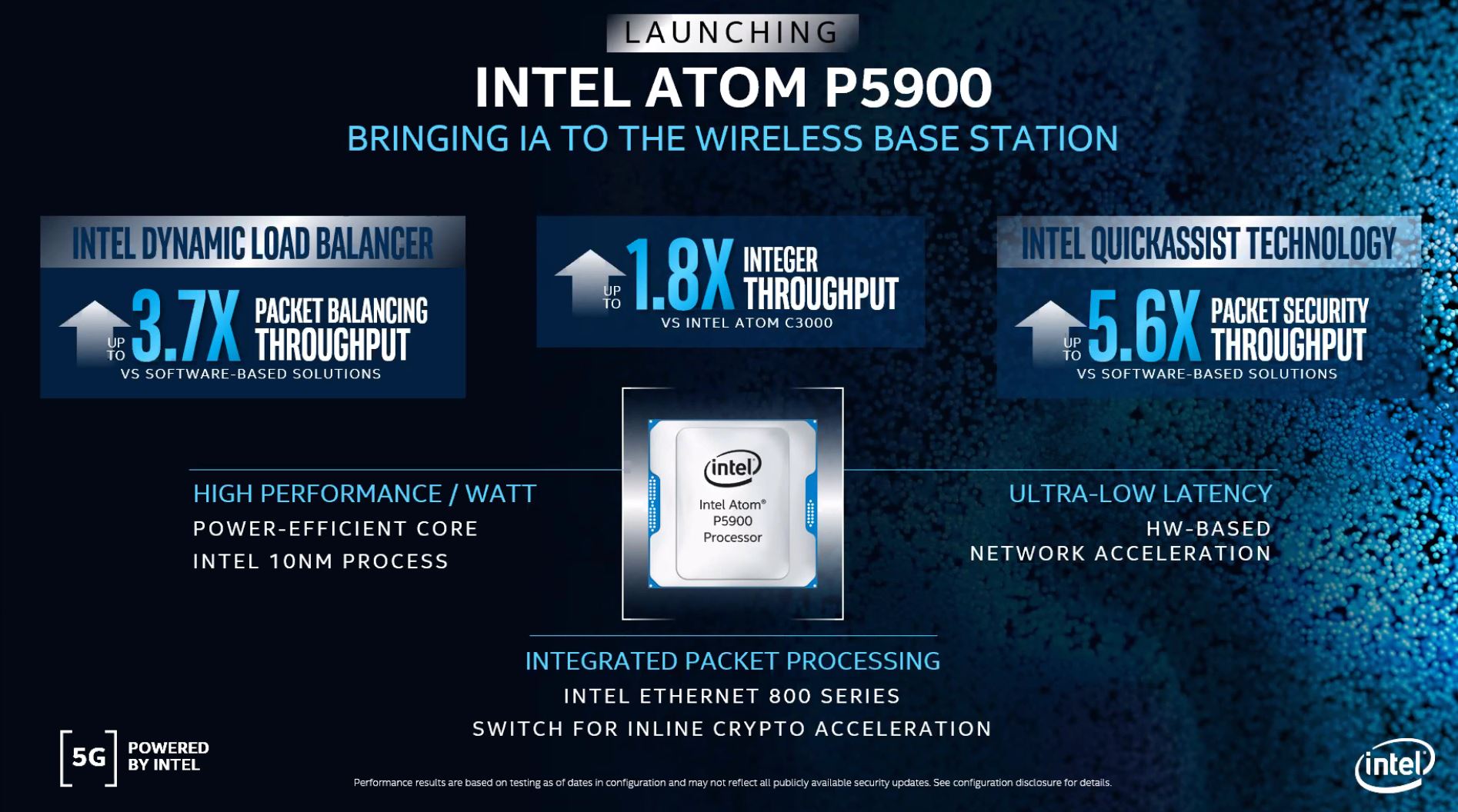
For a small dose of context, this part was announced as part of the Intel 5G portfolio that included the Xeon Scalable “refresh”, Diamond Mesa eASIC solution, and an updated Intel Ethernet 700 series adapter with hardware-enhanced PTP. The Ethernet 700 series has been around for a long time, being integrated into the Atom C3000 series as well. Networks need precision time, as we discussed more around in our Microchip SyncServer S600 Administering Time for SC19 piece. Yet this is not the technology integrated into the Atom P5900 series. Instead, Intel is using the newer 100GbE generation Ethernet 800 adapter IP.
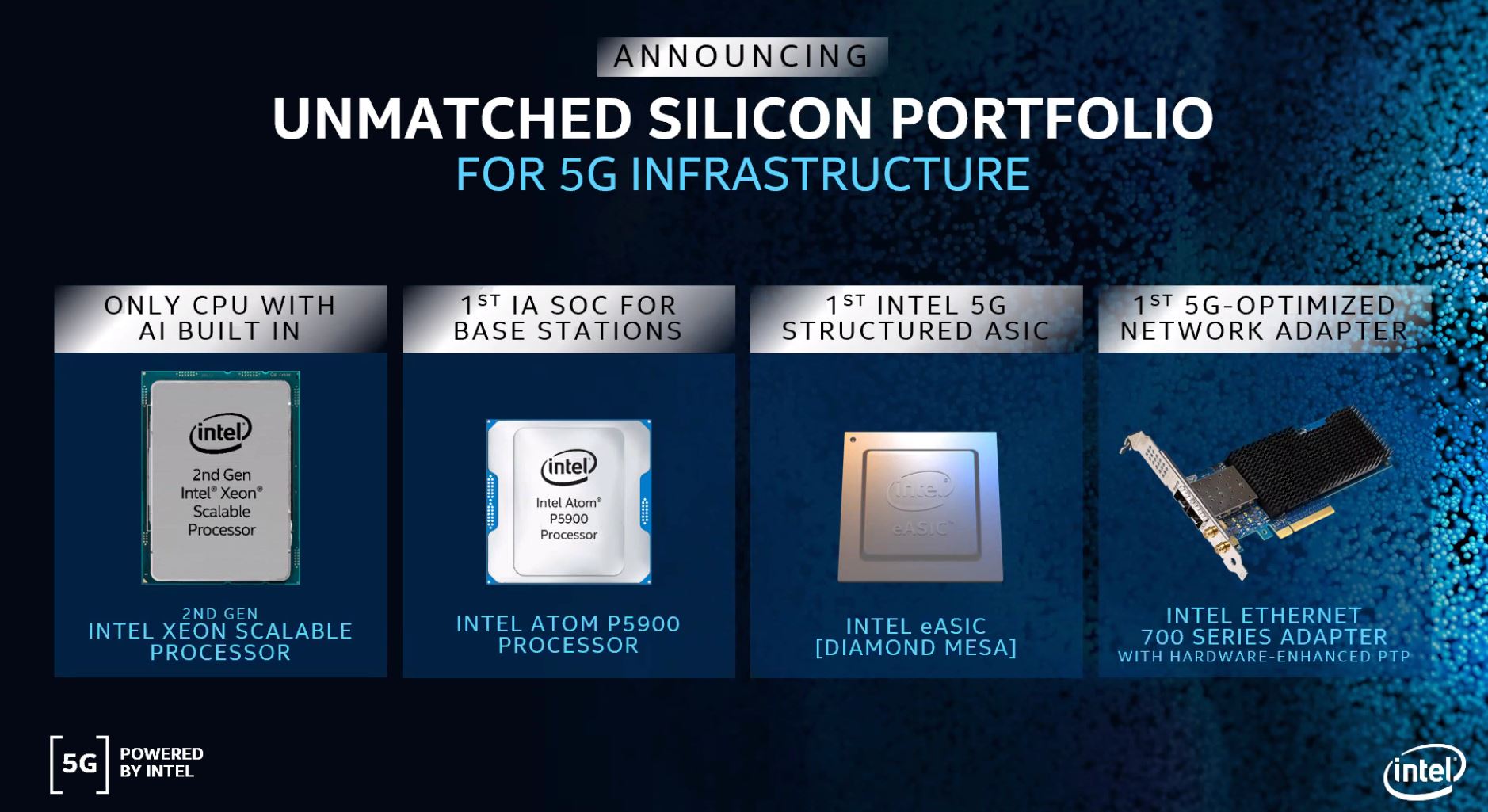
To say this is an eagerly awaited platform is an understatement. Intel said a year ago that they would be out in 2H’19 but Intel has added more customers over the last year.
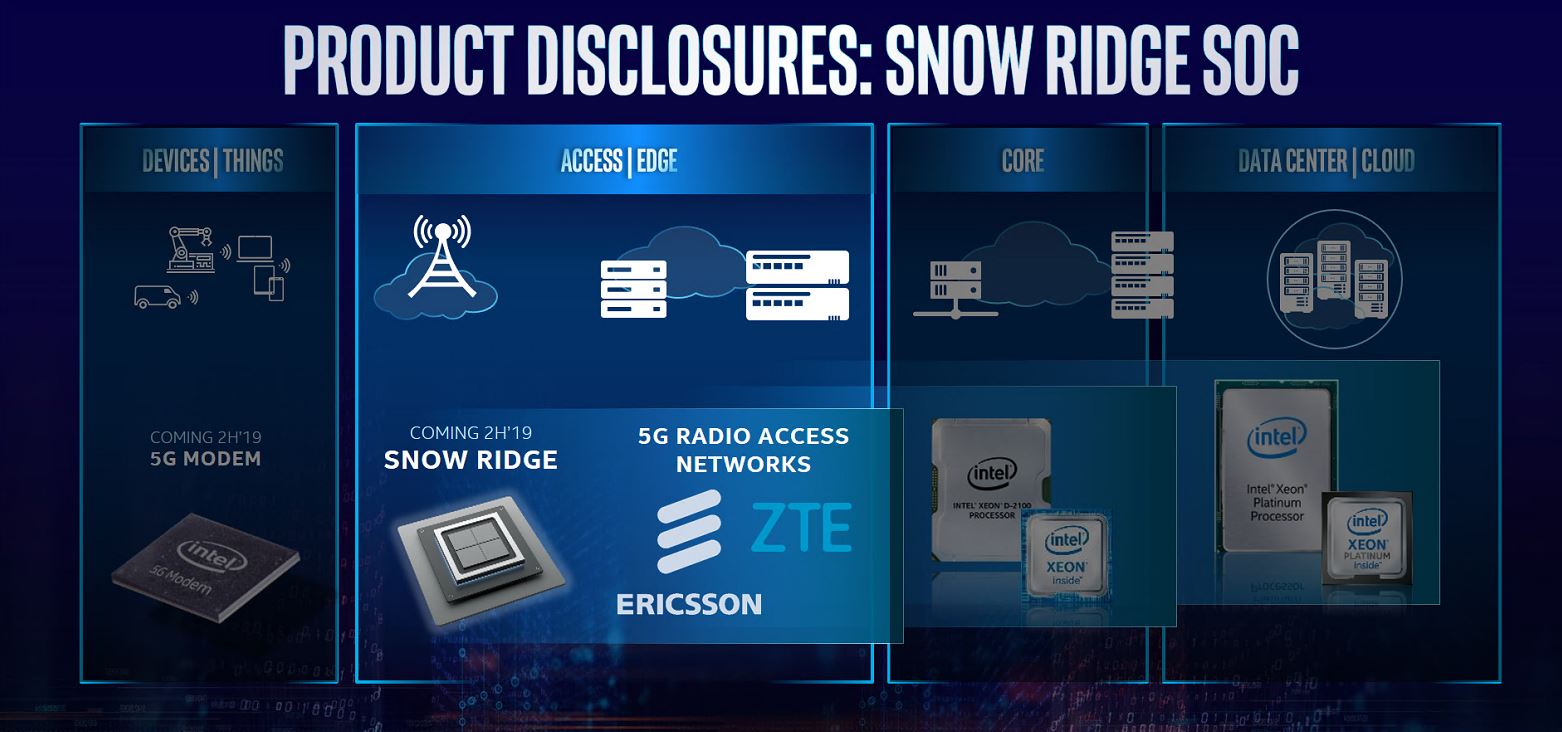
Intel actually showed a 100Gbps network-enabled 10nm SoC back at Architecture Day 2018 which is our cover image.
The Intel Atom P5900 series is based on the Intel Tremont architecture. If you want to read more about it, you can do so in our deep-dive: Intel Tremont Low Power Architecture Detailed.
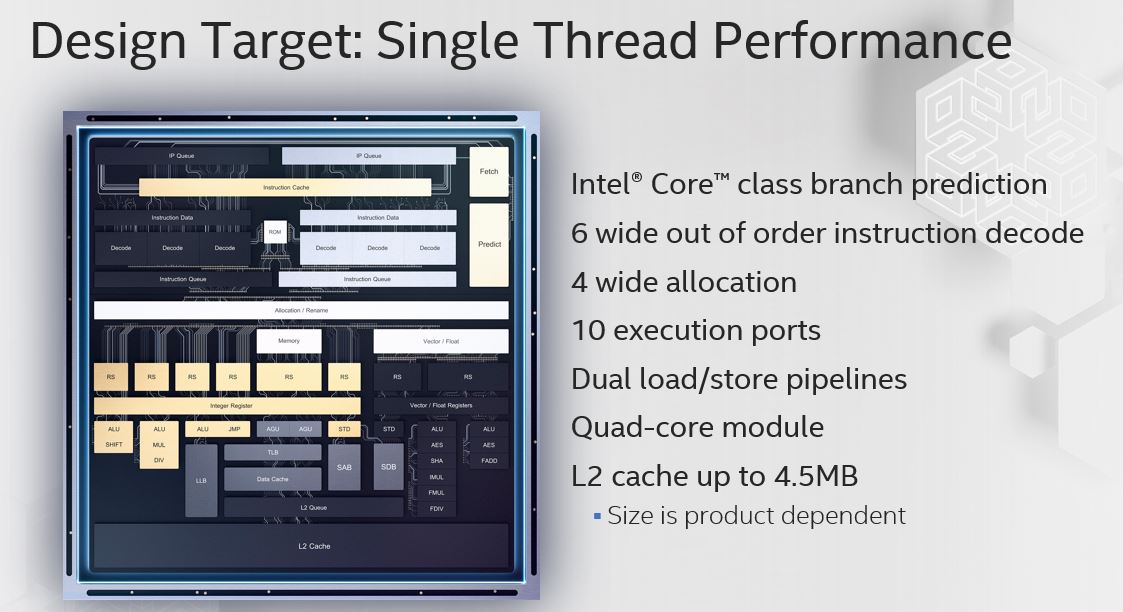
Here, Intel gave a lot of details on the architecture, including how it was achieving higher per-core performance, QoS, as well as the fact the chips could share 4.5MB of cache per core which is configurable by the Intel SoC team. It just so happens that the Intel Atom P5900 SKUs listed in the next section below have 4.5MB of cache for every four cores which means 9MB for the 8 core Atom P5921B and 27MB for the 24-core Atom P5962B.
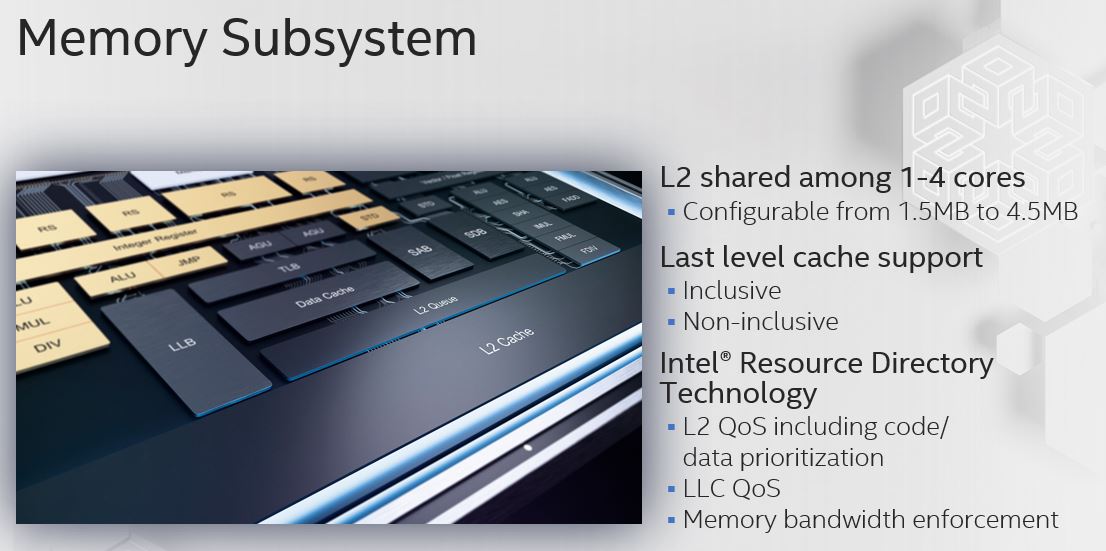
Integrated into the SoC’s is a QuickAssist acceleration engine as well as Intel 800 Series Ethernet Adapter logic which means that we can see up to 100GbE speeds from the SoC a massive generational improvement. We like the fact that Intel is leveraging its NIC portfolio across its PCIe adapters as well as its platforms and SoCs since that makes the driver experience easier after deployment. One of the new and unique features is an integrated switch ranging from 180 to 440Gbps. It is fairly clear these are networking-focused chips.
One will also notice that these are SSE 4.2 instruction set CPUs, not AVX-512 or DL Boost capable. This makes sense as the Atom C3000 series was also not AVX capable. At this end of the market, that is not a required feature so Intel can omit the feature, simplify cores, and produce smaller lower power SoCs as a result. The chips do feature Intel VT-x for virtualization but not VT-x with EPT. Also, the chips do not support VT-d.
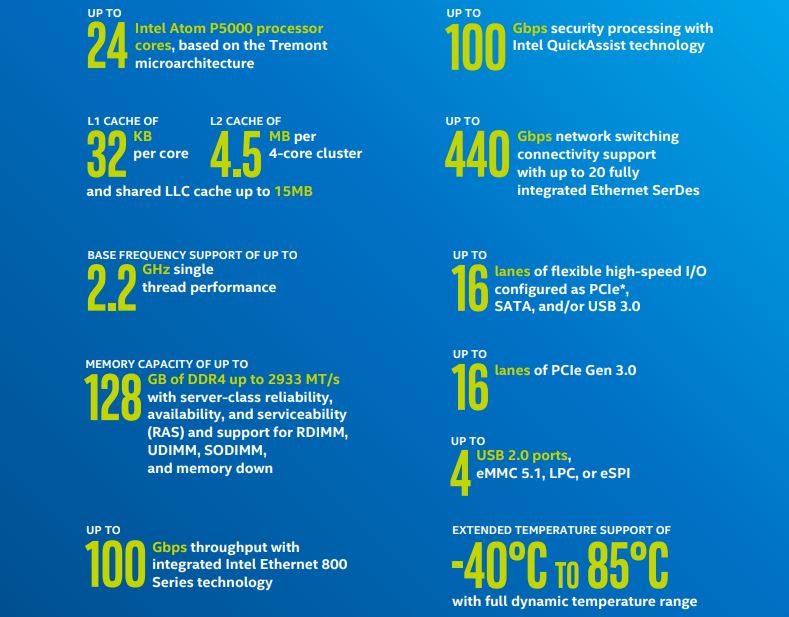
One of the somewhat surprising features is that to optimize on power, these 10nm Intel chips do not have PCIe Gen4 IP. They instead have 16x lanes of both PCIe Gen2 and Gen3 for 32 total I/O lanes. For some perspective, the Intel Atom C3000 series was all PCIe Gen3 as was the Xeon D-2100 series. The older Xeon D-1500 (and higher clocked D-1600) is a mix of PCIe Gen2 HSIO and Gen3. In a sense, this is somewhat of a step backward rather than forward even though there is flexibility with the HSIO lanes.
Intel Atom P5900 SKU Stack
In the initial launch stack, there are four Intel Atom P5900 SKUs ranging from 8 to 24 cores.

The SKUs do not feature Hyper-Threading nor Turbo Boost which helps deliver predictable performance for the set of network workloads that these chips are targeted at. Intel did not publicly disclose TDP nor list pricing on these chips as it has done in the past with Xeon D and Atom C2000/ C3000 series processors.
Final Words
For 5G infrastructure providers, the appeal of these chips should be evident. Intel is claiming that it expects to have 40% market share in base stations by 2021, a year earlier than previously anticipated.
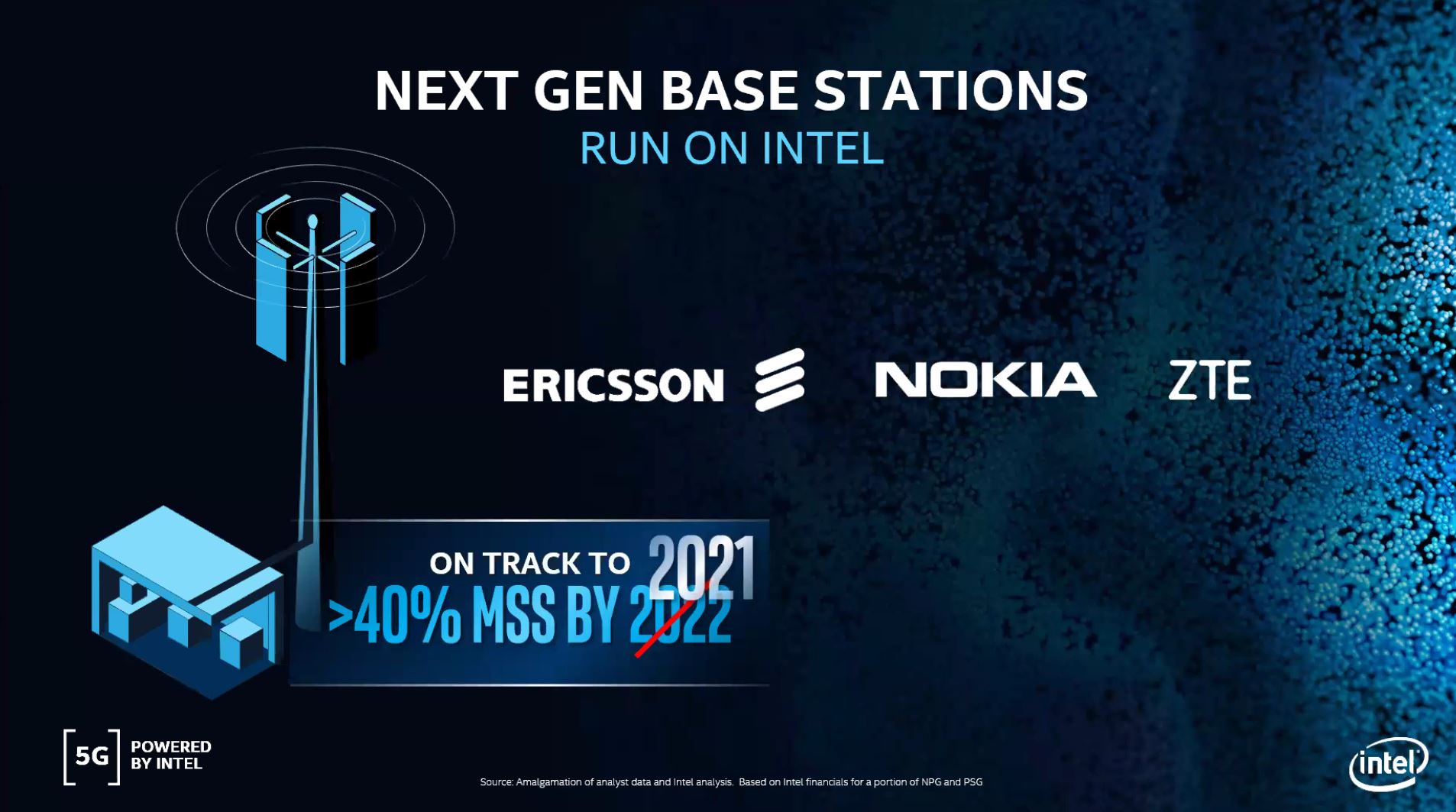
The Intel Atom P5900 series, previously known as “Snow Ridge” is a line that we are extremely excited about. We have been following this market since the Intel Atom C2750 and C2758 launch in 2013 or even before with the 2012 Intel Atom S1200 Centerton Launch. If you take the performance increases we have seen in this series and compare them to mainstream Xeon, the gains are higher and we are seeing features being integrated at a faster rate to keep up with the exploding market segment.

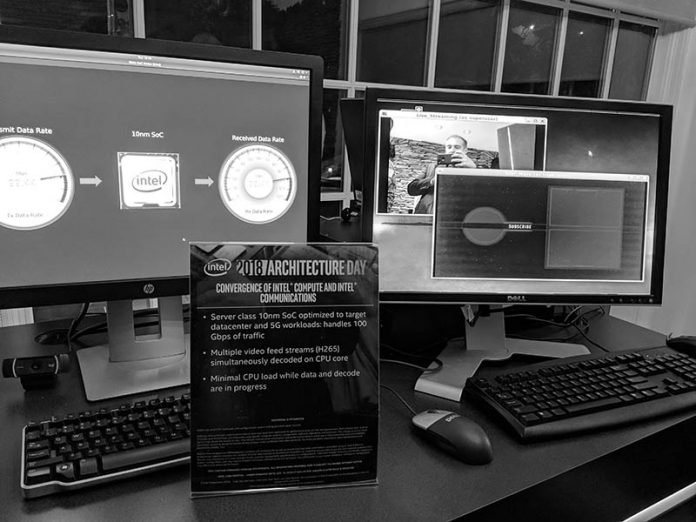



Not bad. Hopefully they will not repeat their I/O dying fiasco from previous atom family.
So is this going to end up a denverton replacement on super micro boards? Or is that another processor?
TDP would be the first thing I would like to know about.
Considering the 24 core chip runs at 2.2Ghz, it will more than likely consume about 24x the TDP of an older, 2,5W Atom processor running at ~1,6Ghz.
My estimation is that this 24 thread chip will run at ~60-65W TDP, while the 16 core will run around 40-45W, and the 12 core around 30-35W; which is respectable, when compared to AMD Epyc systems.
Considering they’re much slower than Epyc CPUs, run PCIE 3.0, and run much slower DDR4 speeds, they’re probably on par performance/watt with one another.
Price on the other hand; intel is jacking up the price because it’s meant for servers.
No socket information, probably means they’re soldered chips.
I wouldn’t mind much, however, for me to decide between this or a Ryzen 4000 CPU, I hope Intel will price them very fairly.
I’m only interested in this, as a data processing unit.
Considering I can buy an older Xeon e5 2650L v2 for $65 ($175 with motherboard and 4GB of DDR3 memory), I think Intel won’t shoot for a $200 range. They’re really worth not much more than $250 (for the cpu and motherboard), but Intel sometimes surprises us with their prices ($800?).
I doubt we’ll see many sales of these CPUs, and that’s a pity.
Intel would do much better selling it to people who’re looking for small home servers.
$300-400 street price, with everything in it (wifi, RAM, emmc, Windows 10, USB, Ethernet, brix-like case, and power adapter)